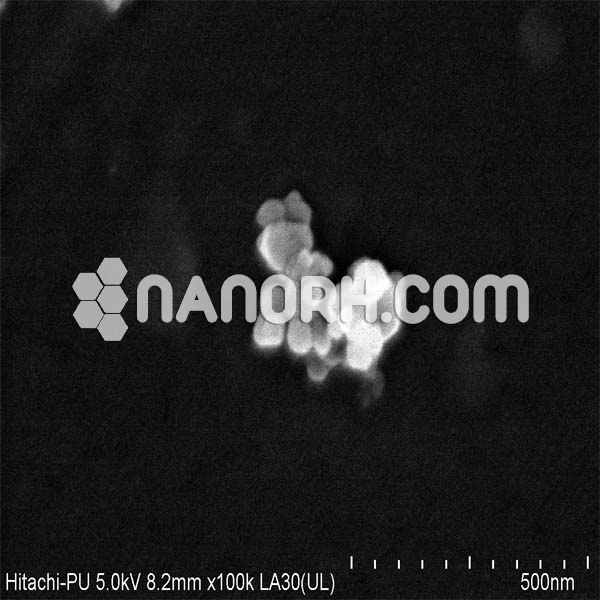B4c Single Crystal
- B4c Single Crystal Rose
- B4c Single Crystal
- B4c Single Crystal Lake
- B4c Single Crystal Necklace
- B4c Single Crystal Diamond
Introduction:
We specialize in the production of abrasives, which include Brown Fused Aluminum Oxide (BFA), White Fused Aluminum Oxide (WA), Pink Fused Aluminum Oxide (PA), Black/Green Silicon Carbide (SiC), Boron Carbide (B4C), Single Crystal Aluminum Oxide, Garnet etc. Every year, approximately 30, 000MT is exported to the world market.
Boron Carbide Nanoparticles (B4C) Product Features: 1. The nano-boron carbide powder has high immaculateness, limit run molecule estimate dispersion, bigger particular surface range et cetera; 2. Nano-boron carbide liquefying point up to 2350oC, breaking point higher than 3500oC, hardness up to 9.3, flexural quality ≥ 400Mpa; 3. The item does not respond with corrosive and salt arrangement. Additionally, it provided a means of writing conductive graphitic layers on semiconducting B4C single-crystal structures for electronics applications. Processes involving the amorphization of B4C. Processes involving the creation of graphitic contacts. Processing of B4C composites such as sintering, consolidation, etc.
Boron carbide (B4C) is an extremely hard material with a melting temperature above 2000°C; its electronic properties vary strongly with the precise composition.

PARADIM’s Tilting Laser Diode Floating Zone Furnace enables users to routinely grow B4C single crystals for further study. The in-situ monitoring of gas-phase species during the growth provides insights on the underlying mechanism by which the composition changes and enables the successful growth of single crystals with controlled stoichiometry. Various growth rates were explored to mitigate microstructure defects (including stacking faults, SF) and zone refinement allowed for a significant reduction of trace impurities. Initial analysis by powder x-ray diffraction confirms that the crystals are indeed rhombohedral B4C, with a hardness of 41±1 GPa and a Young’s modulus of 520±14 GPa revealed by nano-indentation. Laser light was found to induce graphitization in the presence of air, enabling a new process to fabricate electronic structures in boron carbide with micron or nanoscale precision.
M. Straker et al. J. Cryst. Growth543, 125700 (2020).
M.V.S. Chandrashekhar et al., U.S. Patent No. US20190352234-A1 (21 November 2019).
Figure 1: (top left) Photograph of a boron carbide crystal. (bottom left) View into the laser diode floating zone furnace (right) Scanning electron microscopy images of a B4C single crystal with indicated stacking fault lines. |

Technical details: We report the growth of 4 mm diameter × 50 mm long Boron Carbide (B4C) with large single crystal regions using a Laser Diode Floating Zone (LDFZ) method at varying growth rates of 5–20 mm/hr. These materials were grown using polycrystalline B4C as a seed. Microstructural characterization shows the presence of a significant number of twinning-boundaries along the growth direction ([0 0 1]h) oriented in the (1210)h plane. At faster growth rates >10 mm/hr, the crystal orientation was reproducible, suggesting a twin-plane mediated growth mechanism. On the contrary, at slower growth rates <10 mm/hr the crystal orientation was not reproducible, suggesting a critical rate for twin-plane mediated growth to dominate.
Zone refinement of these crystals led to a significant reduction of trace impurities to better than 99.999 wt% purity, at the expense of increased twinning. Powder x-ray diffraction confirms that the bulk is rhombohedral B4C, consistent with the microstructural analysis. The X-ray reciprocal space maps reveal the growth direction to be close to the [001]hdirection, and the corresponding ω-rocking curve width is ~530 arcsec. The rocking curve consisted of 3 distinct peaks, indicating in-plane mosaicism, consistent with the twinning observed. Berkovich nano-indentation of the key (001)h plane showed 41 ± 1 GPa hardness, with a Young’s modulus of 520 ± 14 GPa, comparable to literature reports. In addition, it was discovered that the laser field could induce graphitization of boron carbide in air, a new, previously unknown phenomena that led to a patent application due to the potential uses of the technique in fabricating electronic structures in single crystal boron carbide substrates.
B4c Single Crystal Rose
Researchers of Morgan State University initialized and performed the work at the PARADIM Bulk Crystal Growth Facility located at John Hopkins University.
B4c Single Crystal
Full references:
Michael Straker, Ankur Chauhan, Mekhola Sinha, W. Adam Phelan, M.V.S. Chandrashekhar, Kevin J. Hemker, Christopher Marvel, and Michael Spencer, “Growth of high purity zone-refined Boron Carbide single crystals by Laser Diode Floating Zone method,” J. Cryst. Growth543, 125700 (2020).
M.V.S. Chandrashekhar, Joshua Letton, Travis Williams, Abdulganiyu Ajilore, and Michael Spencer “Laser Induced Graphitization of Boron Carbide in Air,” U.S. Patent No. US20190352234-A1 (21 November 2019) https://patents.google.com/patent/US20190352234A1/en.
B4c Single Crystal Lake
Realizing a New Semiconductor for Power Electronic Applications (MIP #32)
A PARADIM for Jumpstarting Academic Careers (MIP #31)
A Classic Model for Oxides gets a much-needed Update (MIP #30)
B4c Single Crystal Necklace
Accelerating Materials Discovery by Empowering Users—the MIP Difference(MIP #28)
B4c Single Crystal Diamond
PARADIM accelerates discovery of nanoscale chemical gradients in human enamel crystallites (MIP #26)
Materials Enabling a Magnetic “Midas Touch” (MIP #25)
Mollifying Barriers to Enhance Self Assembly (MIP #19)
Floating Zone Crystal Growth at Record Oxygen Pressure to Create a PrNiO3 Single Crystal (MIP #18)
Growth of Stoichiometric B4C Single Crystal by Laser Floating-Zone Method (MIP #9)